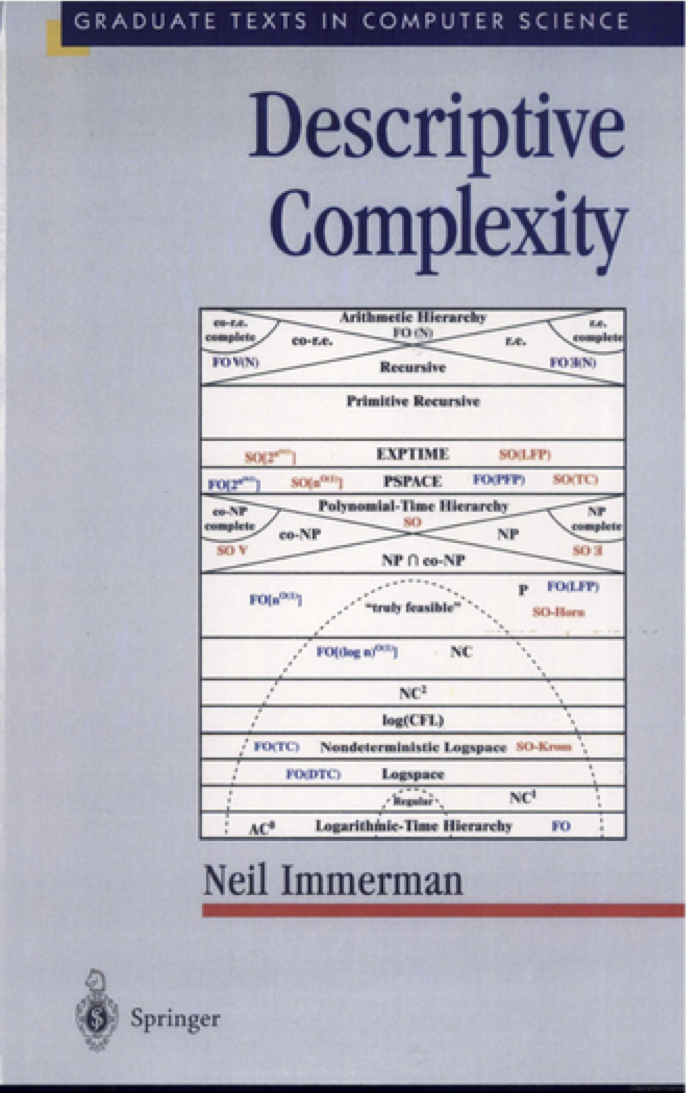
| Descriptive Complexity by Neil Immerman, 1999, Springer Graduate Texts in Computer Science. |
Computational complexity was originally defined in terms of the natural
entities of time and space, and the term complexity was used to denote the
time or space used in the computation. Rather than checking whether an
input satisfies a property S, a more natural question might be: what is the
complexity of expressing the property S? These two issues --- checking and
expressing --- are closely related. It is startling how closely tied they
are when the latter refers to expressing the property in first-order logic
of finite and ordered structures.
Begun in 1974 by Fagin, descriptive complexity has characterized all major
notions of complexity in terms of the richness of logical languages needed
to describe problems. Descriptive complexity is part of finite model
theory, and it ties together logic and computer science. It has major
applications to the theory of databases and computer-aided verification.
This self-contained textbook introduces the methods and results of
descriptive complexity together with its applications. With many
examples and exercises, it may be used for a graduate or advanced
undergraduate course.